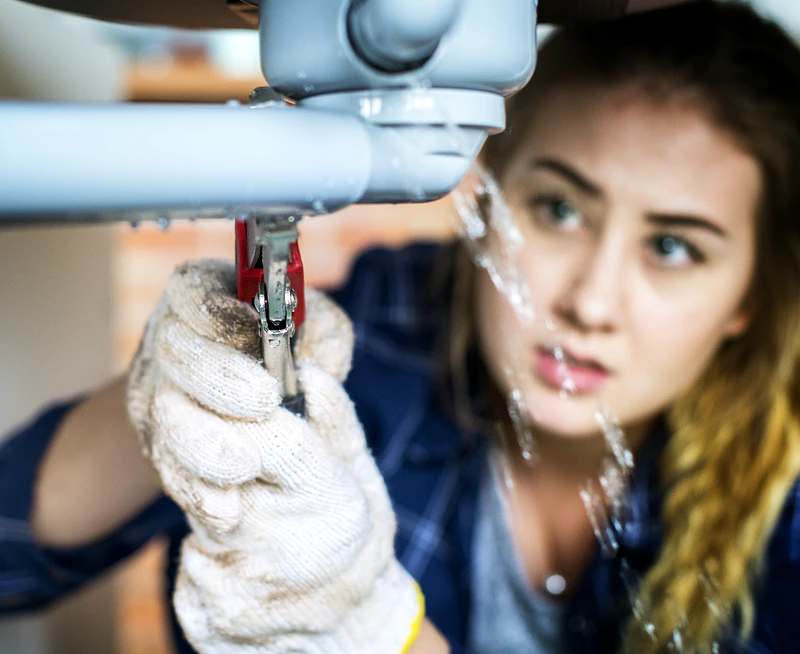A burst pipe is one of the most stressful plumbing emergencies a homeowner can face, especially in a place like Weymouth, where the coastal climate can exacerbate such issues. When a pipe bursts, it can cause significant water damage, lead to costly repairs, and disrupt your daily life. However, with the right knowledge and prompt action, you can minimise the damage and get your plumbing back to normal. This comprehensive guide provides expert tips for burst pipe repair Weymouth, helping you manage the situation effectively and prevent future occurrences.
Understanding Burst Pipes
What Causes Pipes to Burst?
Understanding the common causes of burst pipes is the first step in preventing them. Several factors can lead to a pipe bursting, particularly in areas like Weymouth where weather conditions can vary significantly:
- Freezing Temperatures: When the temperature drops, water inside pipes can freeze. As water freezes, it expands, putting immense pressure on the pipe walls, which can eventually cause the pipe to burst.
- Corrosion: Over time, pipes can corrode due to chemical reactions between the water and the metal. This corrosion weakens the pipe, making it more susceptible to bursting under pressure.
- High Water Pressure: Excessively high water pressure can put a strain on your plumbing system. If the pressure exceeds what the pipes are designed to handle, it can lead to a burst.
- Clogs: Blockages in pipes can cause water to back up, increasing pressure within the pipe. If the pressure becomes too great, the pipe can burst.
- Tree Roots: Tree roots can grow into pipes, especially older pipes with tiny cracks. As the roots expand, they can break the pipe, leading to a burst.
- Poor Installation: Pipes that were not installed correctly are more likely to fail. This includes pipes that were not adequately insulated or those that were not fitted securely.
Signs of a Burst Pipe
Recognising the signs of a burst pipe early can help you take quick action and reduce the amount of damage. Common signs of a burst pipe include:
- Water Puddles: Unexplained water puddles or wet spots on your floors, walls, or ceilings are often the first indication of a burst pipe.
- Low Water Pressure: A sudden drop in water pressure throughout your home can be a sign that a pipe has burst and is leaking water.
- Unusual Noises: Hissing or gurgling sounds coming from your walls or floors can indicate that water is escaping from a burst pipe.
- Discoloured Water: If your tap water suddenly appears rusty or cloudy, it could be due to a burst pipe allowing contaminants into your water supply.
- High Water Bills: An unexpected increase in your water bill could be a sign that water is leaking from a burst pipe somewhere in your home.
- Mould or Mildew: The presence of mould or mildew on your walls, floors, or ceilings could indicate that there is a hidden burst pipe causing moisture build-up.
Immediate Actions to Take When a Pipe Bursts
Shut Off the Water Supply
The first and most crucial step when dealing with a burst pipe is to shut off the water supply to your home. Locate the main water shut-off valve, which is usually found near your water meter or where the main water line enters your home. Turning off the water will stop the flow and prevent further flooding and damage.
Drain the Pipes
After shutting off the water, open all the taps in your home to drain the remaining water from the system. This will help reduce pressure in the pipes and prevent any additional leaks. Don’t forget to flush your toilets to drain the water from the tanks as well.
Turn Off the Power
If the burst pipe is near any electrical outlets, appliances, or your electrical panel, turn off the power to those areas to avoid the risk of electrocution. Water and electricity are a dangerous combination, so it’s better to be safe than sorry.
Locate the Burst Pipe
Try to locate the exact location of the burst pipe. This will help you communicate the problem more effectively to a plumber and allow you to take any necessary steps to contain the damage. If the burst pipe is inside a wall or ceiling, you may notice bulging or damp areas.
Contain the Water Damage
Use towels, buckets, and mops to contain the water and prevent it from spreading further. If the burst pipe has caused significant flooding, you may need to use a wet/dry vacuum to remove the water. It’s also a good idea to move any furniture, electronics, or valuables away from the affected area to prevent further damage.
Call a Professional Plumber
Once you have taken the initial steps to stop the flow of water and contain the damage, it’s time to call a professional plumber. Burst pipes require expert repair, and a qualified plumber can assess the damage, recommend the best course of action, and ensure that the repair is done correctly.
Repairing a Burst Pipe
Temporary Fixes
While waiting for the plumber to arrive, you may be able to perform a temporary fix to minimise the damage. Here are a few options:
- Pipe Clamps: If you have access to a pipe clamp, you can use it to seal the burst pipe temporarily. This will help reduce the flow of water until a permanent repair can be made.
- Rubber Patches and Hose Clamps: Another temporary solution is to use a piece of rubber (such as a section of a garden hose) and secure it over the burst area with hose clamps. This can help stop the leak temporarily.
- Epoxy Putty: Epoxy putty can be moulded around the burst section of the pipe to create a temporary seal. This solution works well for small leaks but is not a permanent fix.
Permanent Repairs
Permanent repairs should always be carried out by a professional plumber. Depending on the severity of the damage, the plumber may recommend one of the following repair methods:
- Pipe Replacement: In many cases, the damaged section of the pipe will need to be cut out and replaced with a new section. This is the most effective way to ensure a long-lasting repair.
- Pipe Relining: If the damage is more extensive, the plumber may recommend relining the pipe. This involves inserting a new lining into the existing pipe, which hardens to create a durable, leak-proof seal.
- Joint Repair: If the burst occurred at a joint, the plumber may replace the damaged joint or use a coupling to join the two sections of pipe securely.
- Complete Pipe Replacement: In cases where the entire pipe is corroded or severely damaged, a complete pipe replacement may be necessary. This is more common in older homes with outdated plumbing systems.
Preventing Future Bursts
After repairing the burst pipe, it’s important to take steps to prevent future incidents. Here are some expert tips for protecting your pipes:
- Insulate Pipes: Insulating your pipes, especially those in unheated areas like attics, basements, and garages, can help prevent them from freezing during cold weather.
- Keep the Heat On: During the winter months, keep your heating on, even when you’re away, to prevent the temperature in your home from dropping too low. This will help keep your pipes from freezing.
- Seal Cracks and Gaps: Seal any cracks or gaps in your walls, floors, and foundation that could allow cold air to reach your pipes.
- Let Faucets Drip: During extreme cold, allow your faucets to drip slightly. This will keep water moving through the pipes and reduce the risk of freezing.
- Maintain Consistent Temperature: Try to keep a consistent temperature throughout your home. Sudden drops in temperature can increase the likelihood of pipes freezing.
- Regular Maintenance: Schedule regular inspections of your plumbing system to identify any potential issues before they become major problems.
The Cost of Burst Pipe Repair
Factors That Affect Repair Costs
The cost of repairing a burst pipe can vary widely depending on several factors, including:
- Location of the Pipe: Pipes that are easily accessible (such as those in basements or under sinks) are generally less expensive to repair than pipes located inside walls or ceilings.
- Extent of the Damage: The severity of the burst and the amount of water damage it has caused will impact the cost of repairs. A small, easily accessible burst may cost less to repair than a major burst that has caused significant flooding.
- Materials Needed: The type of pipe and the materials needed for the repair will also affect the cost. For example, copper pipes are generally more expensive to replace than PVC pipes.
- Labour Costs: The cost of labour will vary depending on the plumber’s rates and the complexity of the repair. Emergency repairs or repairs done outside of normal business hours may also cost more.
Average Repair Costs in Weymouth
While the cost of burst pipe repair Weymouth can vary, homeowners in Weymouth can expect to pay anywhere for the repair, depending on the factors mentioned above. This does not include the cost of repairing any water damage that may have occurred as a result of the burst pipe.
Insurance Considerations
In many cases, homeowners’ insurance will cover the cost of repairing a burst pipe and any resulting water damage. However, it’s important to review your policy and understand what is covered. Some policies may have exclusions for certain types of damage, or they may require you to pay a deductible before coverage kicks in.
If you experience a burst pipe, it’s a good idea to contact your insurance company as soon as possible to report the damage and begin the claims process. Be sure to document the damage with photos and keep records of any repair costs.






